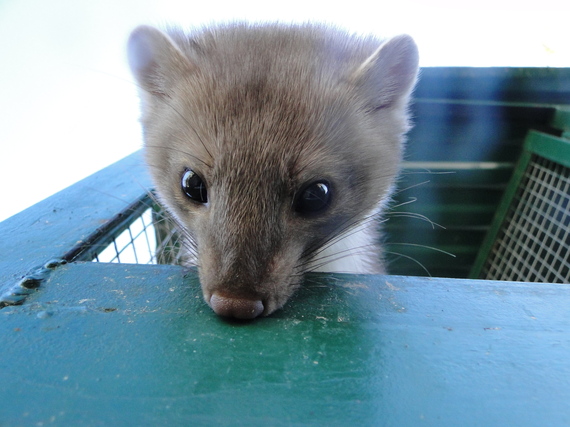As a particle physicist working with the CMS collaboration taking data in the Large Hadron Collider (LHC), now is an incredibly exciting time. In my last post I talked about hints of new physics in the data which were collected in 2015. The LHC was shut down for scheduled maintenance from Dec 2015 until March. During the last week in April, our CMS collaboration was able to turn our large solenoidal magnet to full field and start taking calibration data. Then, you might have heard about the weasel incident. Here, a rodent chewed through a 66 kilovolt power cable and shut the power down. You can read many reports including the one here. Luckily, the power down procedures worked both for the LHC and also our CMS detector and the damage was able to be repaired within a week. Later reports on the unfortunate animal say that it was actually a beech martin and not a weasel. During our regular video working meetings, we got to see many presentations showing us pictures of weasels and beech martens (shown here). We examine data at many stages to see that the parameters that we are using are consistent and our detector is working correctly. For these meetings the many physicists from over 30 countries on our experiment speak in English (which is great for me). I enjoyed seeing the pre-weasel and post-weasel plots that have assured us that we are back on track and collecting data to our best ability. Listening to non-native English speakers pronouncing weasel is also interesting. Now we are going full blast forward to collect a lot of data and analyze it for a major international science conference in Chicago in August.
Of course we are always busy sifting through the data we have already taken to search for different physics phenomena. Now you can also look through our data and search for whatever you want to look for. Our CMS collaboration has just released 300 terra bytes of earlier data from 2010 and 2011 through the CERN open data portal. You can look at the data in the same format as we do after the data have been reconstructed (which will require some technical programming). We've also provided a derived dataset which would require less computing power on your part. There are tutorials and help, especially for high school and other educational groups, to assist you with the effort, should you choose to do an analysis. Part of what we've provided is computer simulations of our detector. The simulated data helps us to understand how efficient we are at collecting the data with our detector. The computer simulation and reconstruction programs are computing intensive. As we take data, they go out over the internet to be reconstructed by computers located all over the world (the grid). Remember that the World Wide Web originated at the CERN laboratory to help enable this scientific communication. At present, a good part of the grid computing we use has been specifically purchased to help analyze or simulate LHC data. However, now there are ways that your computer can help if you want to when you aren't using it. The LHC@home website shows you how you can volunteer your computing to help. You can help with modelling beams for the LHC, with simulations for the ATLAS experiment, and soon for help with the CMS experiment. We're happy to include you in the team effort.

